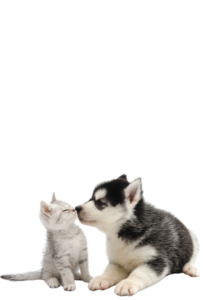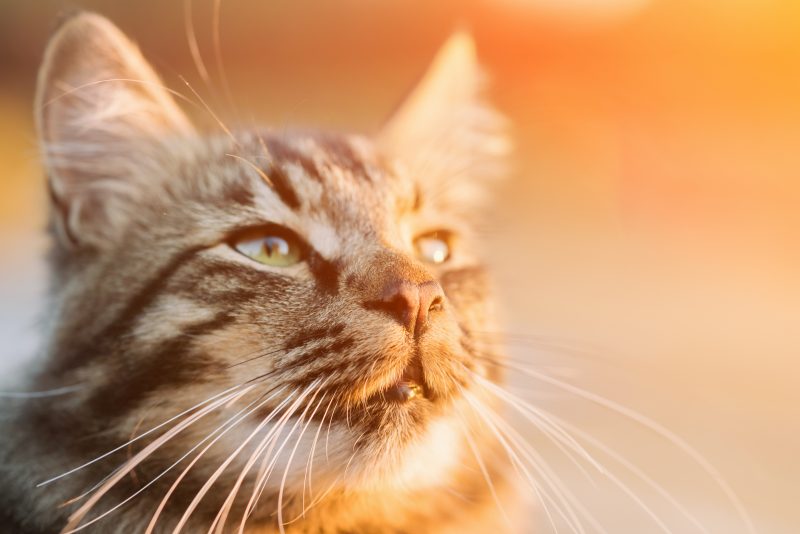Whether cats are cute because of their whiskers or whiskers are cute because of the cats, we may never know! Whiskers are so much more than just cute accessories, in fact, a cat would be hard pressed to perform many of their skills without them.
Whiskers are also called “vibrissae” or “tactile” hairs. The whiskers are 2-3 times thicker than regular cat hair and are not only found on the muzzle but on the jaw, on the eyebrows and on the back of the forelegs. Unlike normal hair, whiskers are embedded deeply in the tissue and are connected to the muscle as well as the nervous system. This allows your cat to move them. The tips of the whiskers are equipped with sensors called proprioceptors. These sensors help your cat determine an object’s distance, direction and texture. If your cat has a narrow food or water dish, the narrow sides can put pressure on these sensitive whiskers which may cause your cat to scoop the food out of the dish with their paw and eat on the floor. If this is something your cat is doing, you may need to consider a wider dish.
The whiskers on the backs of the legs assist the cat when climbing and hunting. These particular whiskers act as a second set of eyes when determining when to bite its prey.
Whiskers often indicate mood as well! Pulled back against the cheek, whiskers can indicate fear or anger while relaxed whiskers indicate relaxed or happy. Pointed whiskers out front can indicate curiosity or the cat is trying to read its environment.
Written by Cumberland Veterinary Clinic




